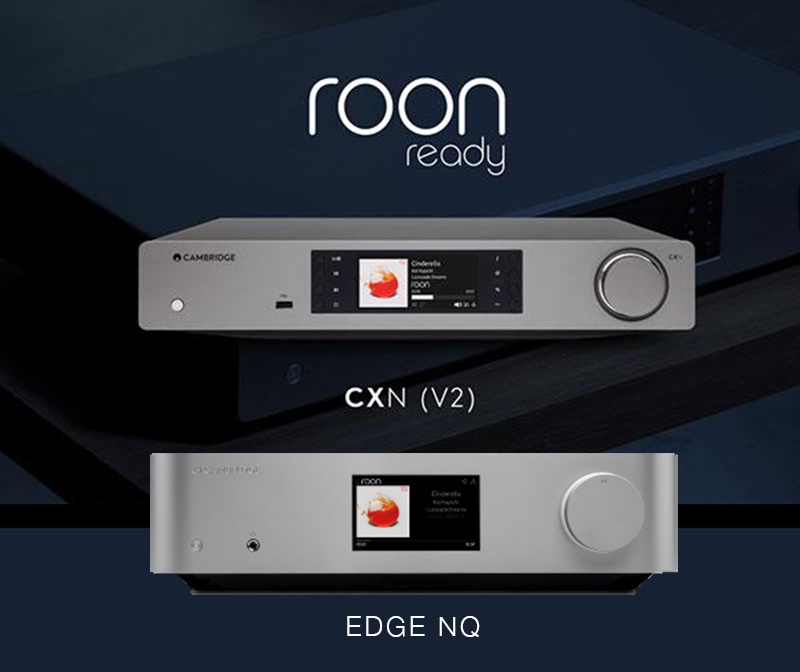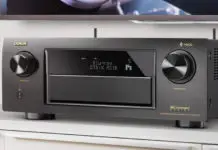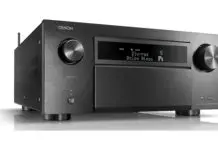Not too long ago, I sat down with audio legend Laurie Fincham, THX’s Senior Vice President of Audio Research, to talk about THX’s Achromatic Audio Amplifier (AAA) technology. THX’s AAA technology lay at the heart of the new Benchmark AHB2 audio amplifier that had just arrived for review. Ordinarily, I would incorporate a product’s technical overview in the context of the final review. However, as my discussions with John Siau, Benchmark’s Vice President of Operations and Director of Engineering, progressed during the review period, I realized very quickly that taking the usual approach would do the AHB2 an incredible disservice. Even the discerning audiophile would potentially mistake the AHB2 as just another audiophile amplifier.
 |
| Benchmark’s Vice President of Operations and Director of Engineering, John Siau. |
I felt instead that a stand-alone interview would be a better approach to get under the hood of the AHB2 amplifier’s design and technology. I therefore took the opportunity to sit down with John for an in-depth technical look at the Benchmark AHB2 Power amplifier. John is a long-time audiophile. In fact, it was his love of music and audio that originally inspired his interest in electronics and prompted him to pursue a degree in electrical engineering at Syracuse University. While a student at Syracuse, John began mixing live sound.
“I have continued to do this over the years,” John told me. “While studying at Syracuse, I developed an interest in digital electronics and computer graphics. When I graduated in 1980, I took my first job at the CBS Technology Center in Stamford, CT.”
While at CBS, John received two patents for video image stabilization and then took a job at GE so that he could move his young family back to Syracuse, NY. After five years at GE, John began working as a consultant designing analog video, digital video, analog audio, and digital audio devices. One of his customers was Benchmark Media Systems.
John shared that in 1995 he designed Benchmark’s first digital audio product, the AD2004. “A short time later,” he said, “I became an employee of Benchmark.
The rest, as they say, is history. If you’ve auditioned any Benchmark equipment, then you’ve almost certainly experienced John’s handiwork first-hand. During his tenure at Benchmark, John has designed each of Benchmark’s A/D and D/A converters including Benchmark’s more recent microphone preamplifiers and headphone amplifiers. It’s very safe to say that John’s design DNA has been a key part that has established Benchmark as a de facto leader in the A/D and D/A converter market.
“We were frustrated by the fact that the performance of the DAC2 [D/A converter] could not be fully appreciated through any of the power amplifiers that were available,” lamented John. “The SNR of the DAC2 exceeded that of all available power amplifiers. The THD+N of the DAC also significantly exceeded the capabilities of all existing power amplifiers. We were confident that we could build a power amplifier that mirrored the performance of the DAC2.”
“Benchmark is not new to power amplifiers,” John told me. “For almost 30 years Benchmark sold the DA-101 audio distribution amplifiers for studio use. These were small 35 W card-mounted power amplifiers with a 150 kHz bandwidth, a 130 dB SNR and very low THD+N. These cards were designed to distribute line-level audio signals, but they were capable of driving speakers. Because of their outstanding performance, we often used these cards to drive monitors in our own listening room.”
That long experience with the DA-101 gave Benchmark some ideas for the next generation amplifier. As John mentioned, the team at Benchmark wanted to build an amplifier to bring out the potential performance of their DAC2 products. Benchmark wanted a high power, passively-cooled power amplifier that equaled or exceeded the performance of the DA-101. It was at that point that Benchmark knew that the current technology and existing topologies by themselves wouldn’t be sufficient for their needs.
“As we examined this task, it became clear that we would not reach our goals if we designed a conventional power amplifier,” John said. “We realized that we needed to look at some unique solutions. We were very focused on eliminating crossover distortion in the output stage because we felt that this was one of the most important factors in the sonic performance of the amplifier. We began experimenting with bias servo circuits to extend the Class A bias region without consuming all of the power that would be needed for full Class A operation.
It was at that point, when Benchmark realized that their engineering goals couldn’t be met with today’s standard solutions, that a providential conversation began with THX.
John went on to tell me, “Several of the engineers at THX are good friends of ours, and they approached us about their new amplifier technology. It specifically addressed crossover distortion while maintaining high efficiency, and they felt confident that it could meet our goals. They already had a small prototype that demonstrated the feasibility of the concept. We tested the prototype and it had virtually no traces of crossover distortion, but it showed some changes in frequency response under load (a problem that was later corrected).”
He told me, “The THX achromatic technology offers vanishingly low distortion. The AHB2 exceeds the sonic performance of Class-A amplifiers while delivering efficiency that approaches that of Class-D amplifiers. Benchmark selected the technology on the basis of low distortion. From our perspective, the high-efficiency was an added bonus. The AHB2 is optimized for the lowest possible distortion and we have chosen to burn a bit more idle power in order to achieve our goals. The AHB2 has remarkable power efficiency, but the THX technology can deliver even higher efficiencies if one is willing to sacrifice some distortion performance.”
John went on to explain, “We [Benchmark] designed the chassis, control systems, thermal management, and analog input stages while THX consultants designed the power supplies and amplification stages. Benchmark set the performance goals while THX provided the patented technologies that made these goals possible. The end result is a product that neither company could have produced on their own.”
“Class AB amplifiers require precise control of the biasing in order to minimize push-pull crossover distortion. Class-H designs add at least two more crossover regions. The AAA technology virtually eliminates this distortion, even when no biasing is used. We have chosen to keep the output stage lightly biased, but we could operate in full Class-B mode without much of a distortion penalty.”
In addition to reflecting the amplifier’s topology, the AHB2 also stands for Benchmark’s founder, Allen H. Burdick, and is a tribute to him. The “2” in the product’s name also means that it’s a two channel amplifier, stereo amplifier. Yet, for many pure-bred audiophiles, monoblock amplifiers represent the pinnacle. I asked John if there were plans to develop a monoblock version of the AHB2.
“No, this is why the amplifier has a bridged mono switch,” he replied. “If we were to create a mono version by deleting a few connectors, it would be an AHB1, but what is the point? It is nice to have the flexibility to start with a single stereo amplifier, and then migrate to two monoblocks. The AHB2 provides this upgrade path.”
 |
| The bridged mono switch on the AHB2 is located on lower left corner of the rear panel. A dedicated SpeakON connector is available for bridged mono mode. |
“Audiophiles are in for a real treat,” John said. “High-resolution audio formats and outboard D/A converters are light years ahead of most audiophile power amplifiers. In many systems, the power amplifier is a final, and very significant, barrier to achieving true high-resolution performance. Upgrading to an AHB2 can make a dramatic improvement in most high-end audiophile systems.”
Discerning audiophiles who are also home theater aficionados seemingly won’t be disappointed either. The ultra-low distortion and cool operating temperature of the amplifier translate into some important potential benefits, but don’t bank on a multichannel version of the AHB2.
John went on to say, “In home theater applications, the AHB2 offers unmatched performance and a complete freedom from hum, hiss, and fan noise. Obviously three or more AHB2 amplifiers will be required for home theater systems, and we have been asked if we would introduce a multichannel version of the AHB2. The answer is that there is not enough power available from a standard 20 A 120 V power outlet. The size of the AHB2 is very deceptive as it can draw and deliver lots of power during audio peaks. There is no way that a 6-channel version could be driven from a single outlet. For this reason, we recommend running no more than two AHB2 amplifiers from a single 120 V circuit. Heed our advice – it’s kind of a bummer to trip a circuit breaker just as the movie starts to get exciting.”
Professional installers will be able to take advantage of AHB2’s audiophile quality while gaining tremendous flexibility in the custom installation details that matter most.
“The AHB2 units can be stacked in a rack with no space between units as long as the rack has adequate ventilation. Unlike most power amplifiers, the AHB2 is magnetically shielded and can be mounted directly above or below almost any audio device without interfering with that device. In contrast, the large line-frequency transformers used in most conventional power amplifiers can emit very strong magnetic fields and these conventional amplifiers should be kept away from everything (including the AHB2). Conventional power amplifiers may interfere magnetically with the AHB2 but not vice versa. For this reason, it is wise to allow some space between the AHB2 and other amplifiers. It is also important to keep the AHB2 away from the heat that is produced by conventional power amplifiers.”
There were several other areas about the AHB2’s build quality, system architecture, and it’s pairing as part of a high res multichannel system at AXPONA that John and I covered, but I’ll leave those for the full review.
Needless to say, I want to express my deep thanks to John for his time throughout this interview and overall review period. The background information both John Siau and Laure Fincham have provided on the Benchmark AHB2 and THX’s AAA technology hopefully give the serious audiophile a much more thorough and deeper understanding of the technology and engineering involved. Indeed, for the serious audiophile, the AHB2 has the potential to be a significant game changer. Stay tuned for our full review and see if the AHB2 lives up to all its promise.











